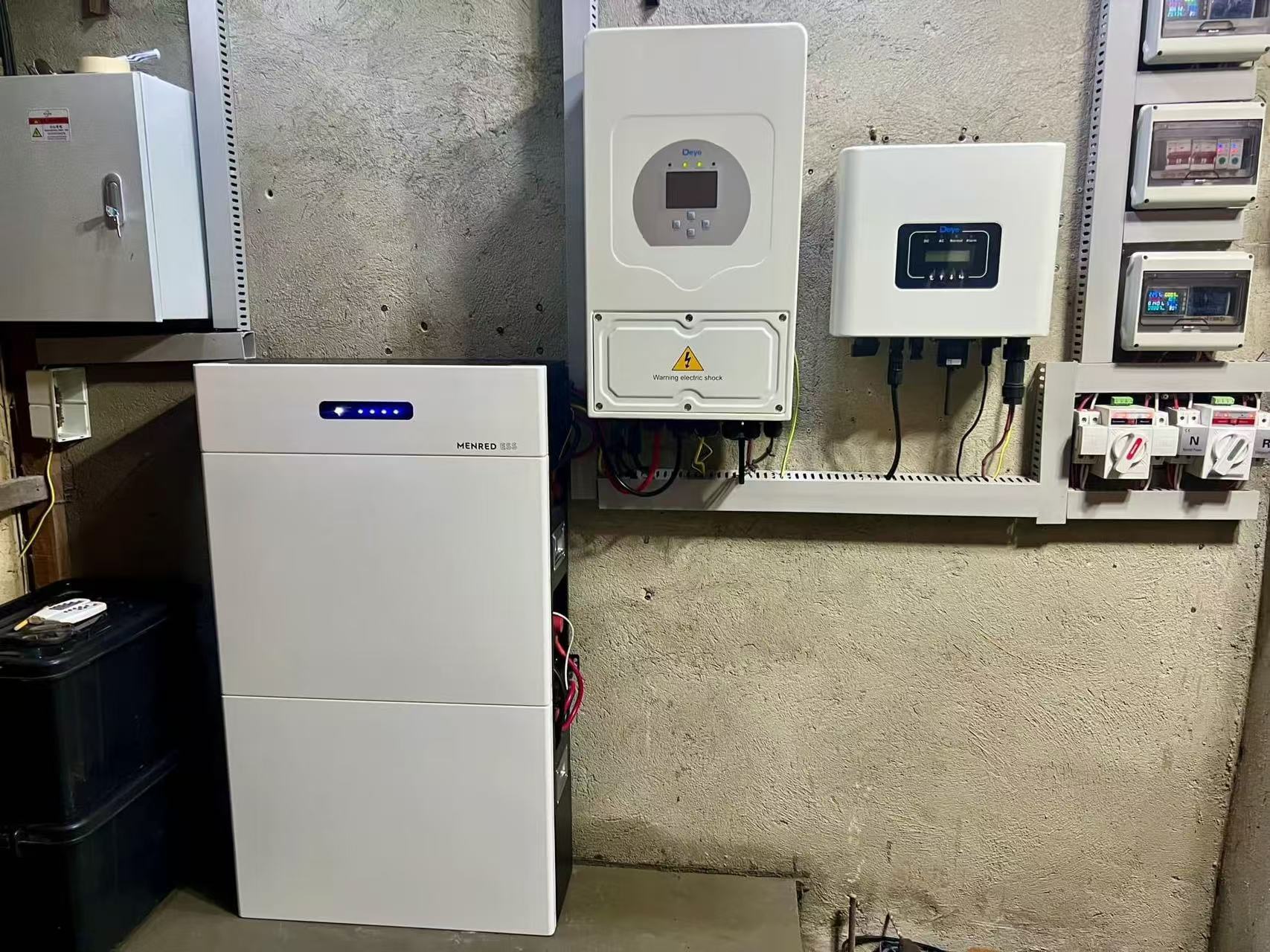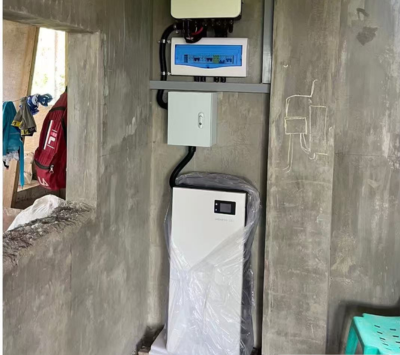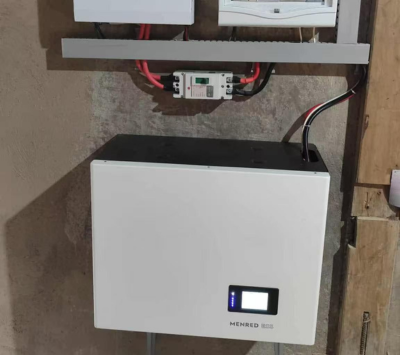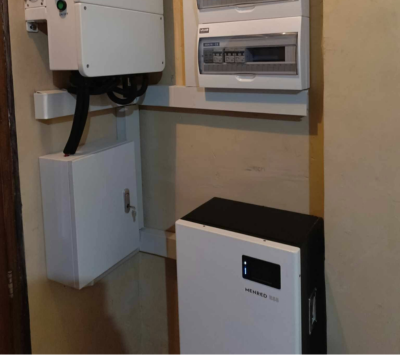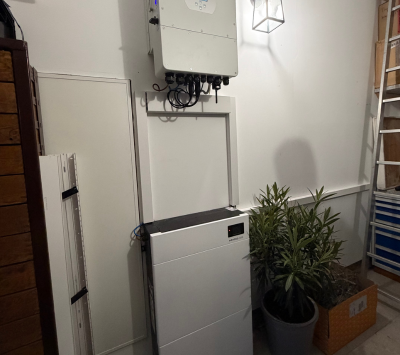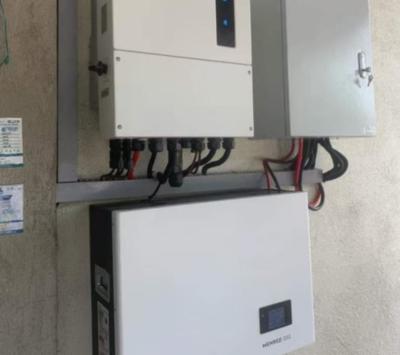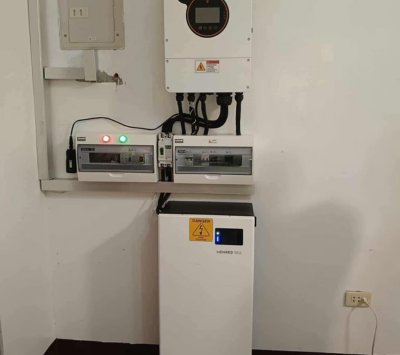As home energy costs rise and grid reliability fluctuates, more homeowners are exploring battery storage systems to achieve greater energy independence. In this article, we’ll explain how home battery storage works, with a real-life example using the MENRED ESS system. This case study will detail how a typical home battery storage system operates, why MENRED ESS was chosen, and how it integrates with other energy sources, including solar power.
Understanding Home Battery Storage: The Basics
To understand how home battery storage works, it’s important to grasp the core purpose of these systems. Home battery storage units store electricity during times of low demand or low cost, making it available when it’s most needed, such as during peak hours or power outages. Typically, these systems are installed alongside solar panels, allowing homeowners to store excess solar energy and use it even when the sun isn’t shining.
In this case study, we look at how the MENRED ESS system was chosen to meet a customer’s home energy needs, highlighting the ways it can help reduce reliance on the grid and provide backup power in emergencies.
MENRED ESS System Overview: A Real-World Example
The MENRED ESS system installed in this project is a lithium iron phosphate (LFP) battery storage unit, specifically the MENRED LFP 6144.G2 model. It provides 12.28kWh of energy storage and can discharge at a 1C rate, which means it can deliver its full capacity within an hour if required. This makes it suitable for homes with high energy demands or for those needing reliable backup power.
Key components of this system include:
- MENRED LFP 6144.G2 Battery: Known for durability and efficiency, this battery can support the home’s power needs, particularly during peak times or outages.
- DEYE 6K-SG03LP1-EU Hybrid Inverter: The inverter allows seamless energy management, switching between grid power, battery power, and solar power as needed.
- Solar PV Integration: The battery storage system is also compatible with solar power, enabling efficient energy use from renewable sources.
How Does MENRED ESS Home Battery Storage Work?
The MENRED ESS system demonstrates how home battery storage works by storing and managing energy in real-time. Here’s a breakdown of its operation:
- Energy Collection: During the day, if the home is equipped with solar panels, they generate electricity. Any excess solar power not used by the home is directed to the MENRED ESS battery system.
- Storage of Excess Power: The battery stores this excess electricity for later use. In areas where electricity rates vary by time of day, the battery can also store cheaper grid power during off-peak hours for use during peak pricing periods, helping to lower energy costs.
- Power Supply During High Demand: When household energy demand increases or if the solar panels are not generating (e.g., at night), the stored electricity is discharged from the battery to power the home, reducing the need to draw power from the grid.
- Automatic Backup During Outages: In case of a power outage, the MENRED ESS system automatically switches to battery power to keep essential appliances running. This functionality makes it ideal for areas where grid reliability is a concern.
Key Benefits of Home Battery Storage Systems Like MENRED ESS
Home battery storage systems, such as MENRED ESS, provide numerous benefits by allowing homeowners to optimize energy usage and increase their control over power resources. Here’s a closer look at how this system helps maximize efficiency:
- Energy Independence: By storing energy generated by solar panels or drawn from the grid during cheaper periods, homeowners can rely less on utility companies, increasing self-sufficiency.
- Cost Savings: Storing and using off-peak electricity during high-rate hours can significantly reduce energy bills. Additionally, in areas with net metering, stored excess solar energy can also generate credit with the utility provider.
- Backup Power: Battery storage systems provide a reliable power source during outages, a valuable feature for homes in regions with frequent grid instability.
- Sustainability: Battery storage promotes renewable energy use, allowing for optimal use of solar power and reducing the overall carbon footprint of the household.
Why MENRED ESS? Choosing the Right Home Battery Storage System
The MENRED ESS system was selected for this project due to its high energy capacity, efficiency, and safety. Understanding how home battery storage works involves recognizing the importance of choosing the right technology. MENRED ESS uses lithium iron phosphate (LFP) batteries, which are known for their long lifespan, stability, and safety in residential settings.
Installation Process of MENRED ESS: Practical Insights
A key part of how home battery storage works is the installation process. MENRED ESS is modular and easy to install, designed for ground-mounted setups in homes. Here’s an overview of the installation process for this project:
- Site Assessment: The installation team evaluated the site to determine the best location for the battery, ensuring easy access, adequate ventilation, and proper structural support.
- System Integration: Once the battery was placed, it was connected to the DEYE hybrid inverter, linking it to the home’s solar system and grid power to manage energy flow efficiently.
- Safety Checks: After installation, rigorous safety and functionality checks were conducted to confirm that the system was operational and in compliance with electrical standards.
- Customer Orientation: The installer provided the customer with an overview of the system’s operation, including instructions on how to monitor energy flow and battery levels.
How Home Battery Storage Supports Renewable Energy Adoption
Home battery storage, particularly when combined with solar power, supports renewable energy adoption by maximizing the use of clean energy. By understanding how home battery storage works, homeowners can make informed decisions about energy usage, storing excess solar energy for later and reducing grid dependence. For environmentally-conscious homeowners, this system makes it possible to achieve a greener lifestyle without sacrificing energy reliability.
Common Applications of Home Battery Storage Systems
While this project involved a specific residential case, the MENRED ESS system’s adaptability makes it suitable for a variety of applications:
- Urban and Rural Homes: MENRED ESS provides stable backup power for homes in both rural and urban settings, where grid reliability may vary.
- Off-Grid Homes: In off-grid settings, the battery system can store solar energy for continuous power, making it essential for remote locations.
- Emergency Preparedness: Home battery storage is increasingly valued for its ability to keep essential services running during extended power outages, offering peace of mind to homeowners.
Conclusion: A Reliable Solution for Modern Energy Needs
In exploring how home battery storage works through this MENRED ESS case study, it’s evident that these systems offer numerous advantages, from cost savings to enhanced energy reliability. The MENRED ESS system is a robust, scalable, and efficient solution that enables homeowners to manage energy resources effectively and meet diverse energy needs. With the rise in demand for renewable energy and grid independence, MENRED ESS and similar systems are paving the way toward a sustainable future.
Frequently Asked Questions (FAQs)
1. How does home battery storage work in simple terms?
Home battery storage systems work by storing excess electricity—typically from solar panels—when demand is low. This stored energy can be used when demand is high or during power outages, providing continuous power supply.
2. Can I install MENRED ESS without solar panels?
Yes, MENRED ESS can be connected to the grid alone, storing energy during off-peak hours for use during peak times. However, integrating it with solar panels enhances its benefits by enabling storage of clean, renewable energy.
3. How long does a MENRED ESS battery last?
The MENRED ESS system uses LFP batteries, which typically last 10–15 years, depending on usage and maintenance.
4. Is home battery storage cost-effective?
Yes, home battery storage can reduce electricity costs by allowing homeowners to use stored energy during peak hours. Additionally, it provides backup power during outages, adding value for areas with unreliable grids.
5. What are the safety features of MENRED ESS?
MENRED ESS uses lithium iron phosphate (LFP) technology, known for its thermal stability, making it a safer option for residential use. It also undergoes rigorous safety checks during installation.

